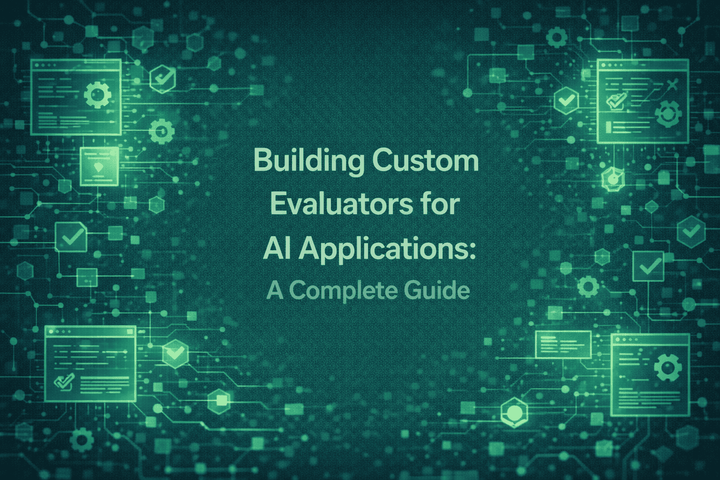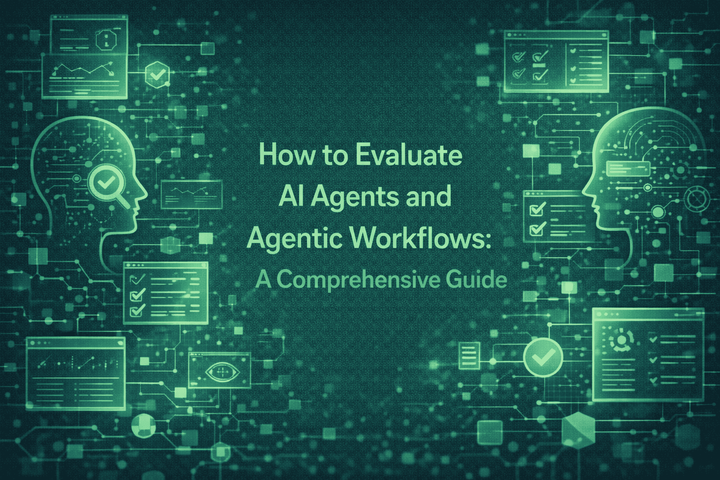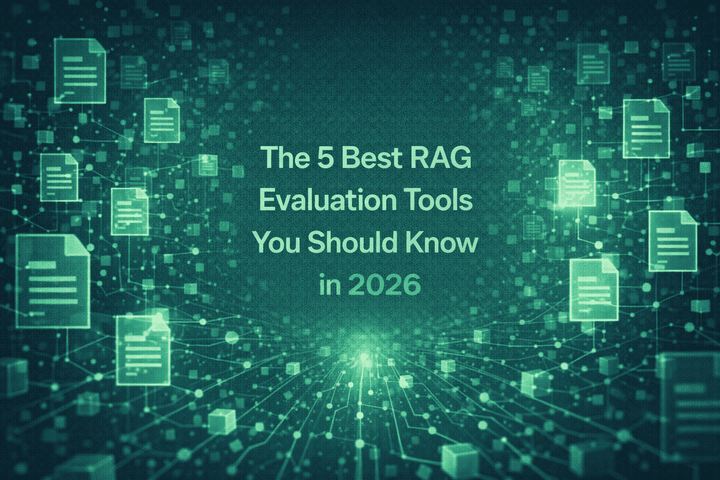Top 5 Model Evaluation Tools to Improve Your LLM-Powered Applications

Large Language Models (LLMs) are at the heart of today’s AI powered applications, from chatbots and copilots to knowledge management tools.
However, teams need to know:
- Are outputs factually correct and safe?
- Do they remain reliable across scenarios and updates?
- Can we monitor issues in production before they spiral out of control?
That’s where AI evaluation and observability tools come in. In this guide, we’ll break down five leading platforms that help developers test, measure, and monitor their LLM-powered applications. You’ll see where each tool shines, and how Maxim AI offers a unified approach for teams that need enterprise-grade evaluation and observability.
Why Evaluation Matters
LLM evaluation isn’t just about accuracy. It spans quality, safety, and operational readiness. Done well, it ensures:
- Consistent Quality: Models behave as expected across diverse user inputs.
- Operational Safety: Bias, hallucinations, or unsafe content are flagged early.
- Faster Iteration: Teams deploy with confidence, knowing updates meet quality thresholds.
Want more context? Check out Maxim’s guides on AI agent evaluation workflows and evaluation metrics.
1. Maxim AI (Unified Evaluation & Observability)
Maxim AI is purpose-built for organizations that need end-to-end simulation, evaluation and observability for AI-powered applications. Maxim's platform is designed for the full agentic lifecycle, from prompt engineering, simulation and evaluations (online and offline) to real-time monitoring for your applications so that your AI applications deliver superior user experience to your end users.
Key Features
- Agent Simulation & Multi-Turn Evaluation: Test agents in realistic, multi-step scenarios, including tool use, multi-turn interactions, and complex decision chains. Simulation Docs
- Prompt Management: Centralized CMS with versioning, visual editors, and side-by-side prompt comparisons. Maxim's Prompt IDE enables you to iterate on your prompts, run experiments and A/B test different prompts in production. Prompt Management
- Automated & Human-in-the-Loop Evals: Run evaluations on end-to-end agent quality and performance using a suite of pre-built or custom evaluators. Build automated evaluation pipelines that integrate seamlessly with your CI/CD workflows. Maxim supports scalable and seamless human evaluation pipelines alongside auto evals for last mile performance enhancement. Evaluation Workflows
- Granular Observability: Node-level tracing with visual traces, OTel compatibility, and real-time alerts for monitoring production systems. Support for all leading agent orchestration frameworks, including OpenAI, LangGraph, and Crew AI. Easily integrate Maxim’s monitoring tools with your existing systems. Observability
- Enterprise Controls: SOC2, HIPAA, ISO27001, and GDPR compliance, fine-grained RBAC, SAML/SSO, and audit trails.
- Flexible Deployment: In-VPC hosting, usage-based and seat-based pricing to fit teams of all sizes whether you are a large enterprise or a scaling team.
Unique Strengths
- Highly performant SDKs for Python, TS, Java, and Go for a superior developer experience with integrations for all leading agent orchestration frameworks
- Enables seamless collaboration between Product and Tech teams to build and optimise AI applications with superior dev-ex and super intuitive UI acting as a driver for cross-functional collaboration and speed
- Enables product teams to run evals directly from the UI effectively, whether they are running evals on prompts or for an agent built in Maxim's No-Code agent builder or any other no-code platform that they want to test
- Agent simulation enables you to simulate real-world interactions across multiple scenarios and personas rapidly
- Real-time alerting with Slack/PagerDuty integration
- Comprehensive evals and human annotation queues to evaluate your agents across qualitative quality and performance metrics using a suite of pre-built or custom evaluators
Case in point: Comm100 uses Maxim to run safe, reliable AI support in production.
2. LangSmith (Best for Debugging LangChain Apps)
LangSmith is tightly integrated with LangChain, making it the go-to choice if your stack is already LangChain-heavy.
Highlights
- Step-by-step trace visualization of agent runs.
- Evaluation metrics for chains and prompts.
- Built-in versioning to track changes.
- Smooth LangChain integrations.
Where it fits best: debugging and improving LangChain workflows.
What it misses: enterprise-grade observability and cross-framework evaluation that Maxim offers.
3. Arize AI (Best for ML Observability)
Arize AI is a well-established ML observability platform with growing support for LLMs.
Highlights
- Data drift detection across inputs and embeddings.
- Continuous performance monitoring over time.
- Root cause analysis for production regressions.
- Automated anomaly alerts.
Where it fits best: teams already monitoring ML pipelines who want drift/troubleshooting tools.
What it misses: deeper LLM-native evaluation (multi-turn simulation, prompt IDE) that Maxim specializes in.
4. LangFuse (Best for Lightweight LLM Tracing)
LangFuse focuses on lightweight observability for LLMs.
Highlights
- Distributed tracing of prompts and model calls.
- Define custom metrics tailored to your app.
- Data export to external analysis tools.
- Supports OpenAI, LangChain, and others.
Where it fits best: teams that want transparent tracing with simple analytics.
What it misses: enterprise-scale evaluation, security, and simulation capabilities like Maxim’s.
5. Comet ML (Best for Experiment Tracking)
Comet ML is widely used in ML for experiment management, and it now extends to LLMs.
Highlights
- Centralized experiment tracking for runs, hyperparameters, and metrics.
- Collaboration features for sharing results.
- Visualizations for model performance curves.
- Broad framework integrations.
Where it fits best: research-oriented teams comparing many models.
What it misses: LLM-specific production observability and scenario-based evaluation.
Quick Comparison
| Tool | Strengths | Best For | Gaps vs Maxim |
|---|---|---|---|
| Maxim AI | Unified eval + observability, enterprise security, agent simulation | End-to-end evaluation and observability of LLM Applications | — |
| LangSmith | Trace visualization, LangChain-native | Debugging LangChain apps | Limited cross-framework support |
| Arize AI | Drift detection, ML observability | Monitoring ML pipelines | Limited LLM-native eval |
| LangFuse | Lightweight tracing, custom metrics | Teams wanting transparent logging | Missing enterprise features |
| Comet ML | Experiment tracking, collaboration | Research & experiment management | No LLM simulation or observability |
Choosing the Right Tool
When evaluating, ask:
- Do you need offline + online evaluations?
- Will you benefit from scenario simulation (multi-turn, edge cases, personas)?
- Is human review critical for bias and safety?
- Does your org require SOC 2, GDPR, or VPC deployment?
- How well does it integrate with your existing stack?
Best Practices for LLM Evaluation
- Set clear metrics that map to business goals.
- Automate evaluations in CI/CD for every release.
- Test edge cases and diverse personas, not just happy paths.
- Observe in production to catch regressions fast.
- Blend automation with human review for nuanced checks.
Final Thoughts
The evaluation ecosystem is evolving quickly. Tools like LangSmith, Arize, LangFuse, and Comet ML solve important parts of the puzzle. But if you’re looking for a single, enterprise-ready platform that unifies evaluation and observability, Maxim AI covers the full lifecycle: prompt engineering, simulation, evaluation, and observability.
Want to see it in action? Get started for free or book a demo to explore how Maxim can streamline your AI development.


